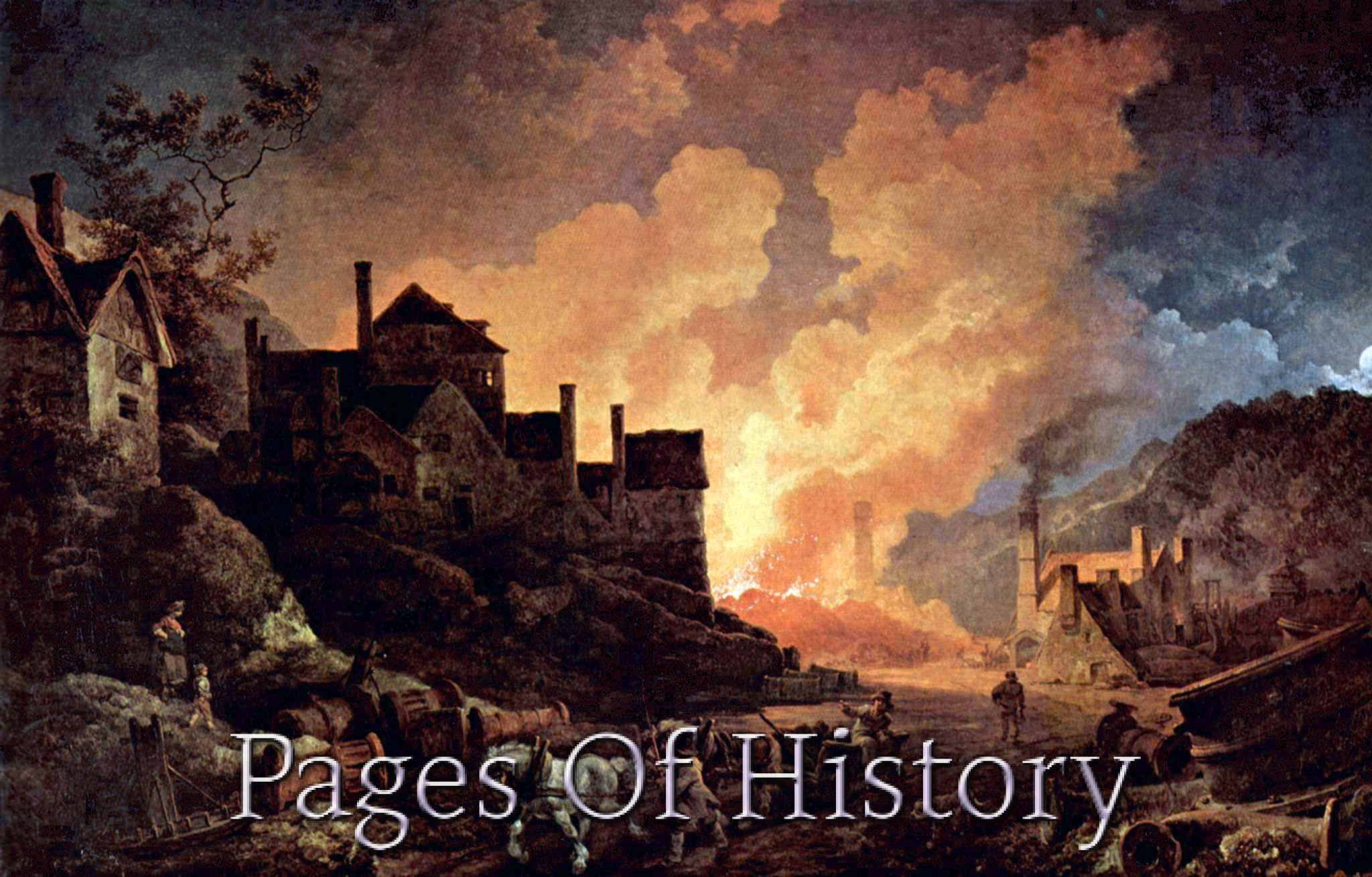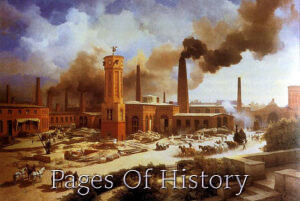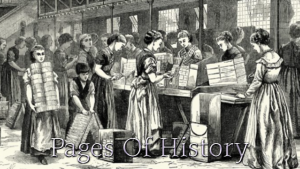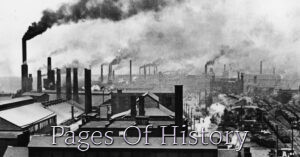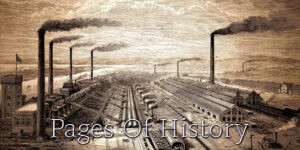The Industrial Revolution Causes and Effects
The Industrial Revolution, which began in the late 18th century and continued well into the 19th century, was a transformative period in human history. This era of rapid industrialization and technological advancements led to significant social, economic, and environmental changes that still shape the modern world. In this comprehensive article, we will explore the major causes and far-reaching effects of the Industrial Revolution, keeping in mind the principles of SEO to ensure maximum visibility and engagement.
Background and Context
Before diving into the causes and effects of the Industrial Revolution, it's essential to understand the historical context in which it took place. The period preceding the Industrial Revolution was characterized by agrarian societies and a predominantly rural lifestyle. However, as the revolution unfolded, it laid the foundation for urbanization and a shift towards an industrial, modern society.
Causes of the Industrial Revolution
Agricultural Revolution
The Agricultural Revolution played a pivotal role in setting the stage for the Industrial Revolution. Agricultural advancements such as crop rotation, selective breeding, and new farming equipment led to higher crop yields and increased food production. As a result, the population grew, and fewer people were needed to work the land, freeing up labor for industrial pursuits.
Population Growth
A growing population provided the necessary labor force for the burgeoning industries. As agricultural innovations increased food production, the death rate decreased while the birth rate rose. This led to a larger workforce, which in turn fueled the demand for goods and services, driving industrial expansion.
Technological Innovations
The introduction of groundbreaking technologies and machinery was a driving force behind the Industrial Revolution. The invention of the steam engine, the spinning jenny, and the power loom, among others, revolutionized industries such as textiles, transportation, and manufacturing.
Economic Factors
The growth of trade and the expansion of markets played a significant role in the Industrial Revolution. The development of the banking system, the establishment of stock exchanges, and the accumulation of capital provided the financial resources necessary for industrial expansion.
Political and Social Factors
Political stability and a favorable social climate were critical in fostering the Industrial Revolution. Governments supported the development of infrastructure, such as roads, canals, and railways, which facilitated the movement of goods and people. Additionally, a spirit of entrepreneurship and innovation flourished during this period.
Colonial Expansion and Raw Materials
The expansion of European colonial empires provided a steady supply of raw materials, which were essential for the growth of industries. Cotton, timber, and minerals were imported from colonies in Asia, Africa, and the Americas, fueling the production of goods in factories and workshops. Furthermore, colonial territories offered new markets for manufactured goods, fostering a global exchange of products and ideas.
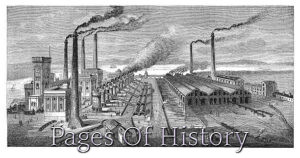
Cultural and Intellectual Climate
The intellectual atmosphere during the 18th and 19th centuries played a crucial role in promoting the Industrial Revolution. The Enlightenment, a period of intellectual and philosophical development, encouraged critical thinking, scientific inquiry, and the pursuit of knowledge. This environment nurtured the minds of inventors and entrepreneurs, who were inspired to develop new technologies and challenge existing economic and social systems.
Effects of the Industrial Revolution
Economic Effects
The Industrial Revolution led to unprecedented economic growth, increased productivity, and the expansion of global trade. As new industries emerged, job opportunities increased, and a new class of industrialists and entrepreneurs was born. However, this growth also led to income inequality and harsh working conditions for many laborers.
Social Effects
The Industrial Revolution transformed societies, leading to urbanization, increased literacy rates, and the rise of a new working class. The shift from agrarian to industrial economies led to the growth of cities and the development of new social institutions. However, it also resulted in overcrowded cities, poor living conditions, and various public health issues.
Environmental Effects
The Industrial Revolution had significant environmental impacts, including deforestation, pollution, and habitat destruction.
The widespread use of coal as a primary energy source led to air and water pollution, contributing to the infamous smog that blanketed many industrial cities. The rapid expansion of industries and urban areas also led to deforestation, the depletion of natural resources, and the loss of wildlife habitats. These environmental challenges persist today, as we continue to grapple with the consequences of industrialization and the need for sustainable development.
Political Effects
The Industrial Revolution profoundly impacted the political landscape, contributing to the rise of new ideologies and the establishment of powerful nation-states. As industrialization and urbanization progressed, demands political reform grew, resulting in the expansion of voting rights and the emergence of labor movements. New ideologies such as socialism, liberalism, and conservatism emerged, shaping the political discourse and driving social change.
Educational and Technological Effects
As the demand for skilled labor increased, so too did the need for education and training. The Industrial Revolution prompted the establishment of public education systems, technical schools, and vocational training programs to develop a skilled workforce capable of meeting the demands of the evolving industries. These educational advancements, in turn, facilitated further technological innovation and progress, setting the stage for future industrial and technological revolutions.
Global Impact of the Industrial Revolution
The Industrial Revolution did not remain confined to Britain but spread to other parts of the world. Europe, North America, and eventually Asia and Africa underwent their own industrial transformations, leading to the rise of global powers and the expansion of colonial empires. The global exchange of goods, ideas, and innovations increased interconnectivity among nations, shaping the political and economic landscape of the modern world.
Spread of Industrialization
Industrialization gradually spread beyond the borders of Britain, influencing other countries to adopt and adapt new technologies and methods. Countries like the United States, Germany, France, and Japan experienced their own industrial revolutions, each with unique characteristics and consequences. This global spread of industrialization contributed to a more interconnected world, with countries increasingly reliant on one another for trade, resources, and technology.
The shift in Global Power Dynamics
As industrialization spread, the balance of global power shifted, with industrialized nations gaining economic and military strength. This led to increased competition among nations and the emergence of new global powers. The industrialization of the United States, for example, transformed it into an economic powerhouse, while Japan's rapid modernization in the late 19th and early 20th centuries allowed it to become a dominant force in Asia.
Legacy of the Industrial Revolution
The Industrial Revolution has left an indelible mark on human history, shaping the way we live, work, and interact today. It paved the way for subsequent technological advancements, such as the Digital Revolution, and has contributed to our modern understanding of economics, politics, and society. However, it also serves as a cautionary tale of the potential negative consequences of unchecked industrial growth, reminding us of the importance of sustainable development and social equity.
Lessons for the Future
The Industrial Revolution offers valuable insights into the relationship between technological progress, economic growth, and social change. As we face new challenges in the 21st century, such as climate change, resource depletion, and growing inequality, we can draw upon the lessons of the Industrial Revolution to develop more sustainable and equitable solutions. This includes embracing renewable energy sources, promoting resource efficiency, and fostering a more inclusive economic system that benefits all members of society.
Impact on Modern Labor and Workforce
The Industrial Revolution significantly influenced the nature of work and the workforce. The shift from small-scale craft production to large-scale factory production led to the development of new organizational structures and management techniques. These innovations, such as the division of labor, laid the groundwork for modern corporations and the concept of wage labor. Today, as automation and artificial intelligence continue to transform the nature of work, we can look back at the Industrial Revolution for insights into how societies adapt to changing labor conditions and the future of work.
Globalization and its Implications
The Industrial Revolution played a critical role in the early stages of globalization, as it facilitated the exchange of goods, ideas, and people across national borders. The expansion of global trade networks, the development of new means of communication and transportation, and the rise of multinational corporations can all be traced back to the Industrial Revolution. However, globalization has also increased inequality, cultural homogenization, and environmental degradation, highlighting the need for more equitable and sustainable approaches to international cooperation and development.
The Industrial Revolution and the Environment
In "The Industrial Revolution and the Environment," we examine the complex relationship between the unprecedented industrial growth of the 18th and 19th centuries and its lasting impact on our planet's ecosystems. As the Industrial Revolution progressed, the rapid expansion of industries, urban areas, and resource extraction led to significant environmental consequences, including deforestation, pollution, and habitat destruction.
This section will explore the various ways in which the Industrial Revolution has shaped our understanding of the environment and the challenges we face today, as well as the lessons we can learn from this transformative period to promote a more sustainable and responsible approach to development and resource use in the modern world.
Lessons for Sustainable Development
The environmental consequences of the Industrial Revolution serve as a stark reminder of the need for sustainable development in the modern world. As we confront pressing environmental challenges, such as climate change and resource scarcity, we can look to the past for guidance on striking a balance between economic growth and environmental stewardship. This includes embracing circular economy principles, investing in clean technologies, and promoting responsible consumption and production patterns.
The Role of Government and Policy
The Industrial Revolution provides valuable insights into the role of government and policy in shaping the course of economic development and addressing social and environmental challenges. Governments played a critical role in supporting the development of infrastructure, promoting technological advancements, and fostering a stable and conducive environment for industrial growth. As we confront the challenges of the 21st century, the lessons of the Industrial Revolution can inform the development of effective policies and regulations that promote sustainable and equitable development.
Conclusion
The Industrial Revolution was a transformative period marked by significant technological advancements, economic growth, and social change. It was driven by factors such as the Agricultural Revolution, population growth, technological innovations, and economic expansion. The effects of the Industrial Revolution were far-reaching, including urbanization, the rise of a new working class, global trade, and environmental degradation. As we continue to grapple with the legacy of this period, it is crucial to learn from both its successes and shortcomings, striving for a more equitable and sustainable future.
Reference & Pictures
- Ashton, T. S. (1948). The Industrial Revolution (1760-1830). Oxford University Press.
URL: https://archive.org/details/in.ernet.dli.2015.185350 - Landes, D. S. (1969). The Unbound Prometheus: Technological Change and Industrial Development in Western Europe from 1750 to the Present. Cambridge University Press.
URL: https://www.cambridge.org/core/books/unbound-prometheus/8A67264ABE3A738BA89FF1D840EBBE07 - Mokyr, J. (2009). The Enlightened Economy: An Economic History of Britain 1700-1850. Yale University Press.
URL: https://yalebooks.yale.edu/book/9780300189516/enlightened-economy - Smil, V. (2017). Energy and Civilization: A History. The MIT Press.
URL: https://mitpress.mit.edu/books/energy-and-civilization - Stearns, P. N. (1998). The Industrial Revolution in World History. Westview Press.
URL: https://www.routledge.com/The-Industrial-Revolution-in-World-History/Stearns/p/book/9780813347295 - Industrial Revolution - Wikipedia

